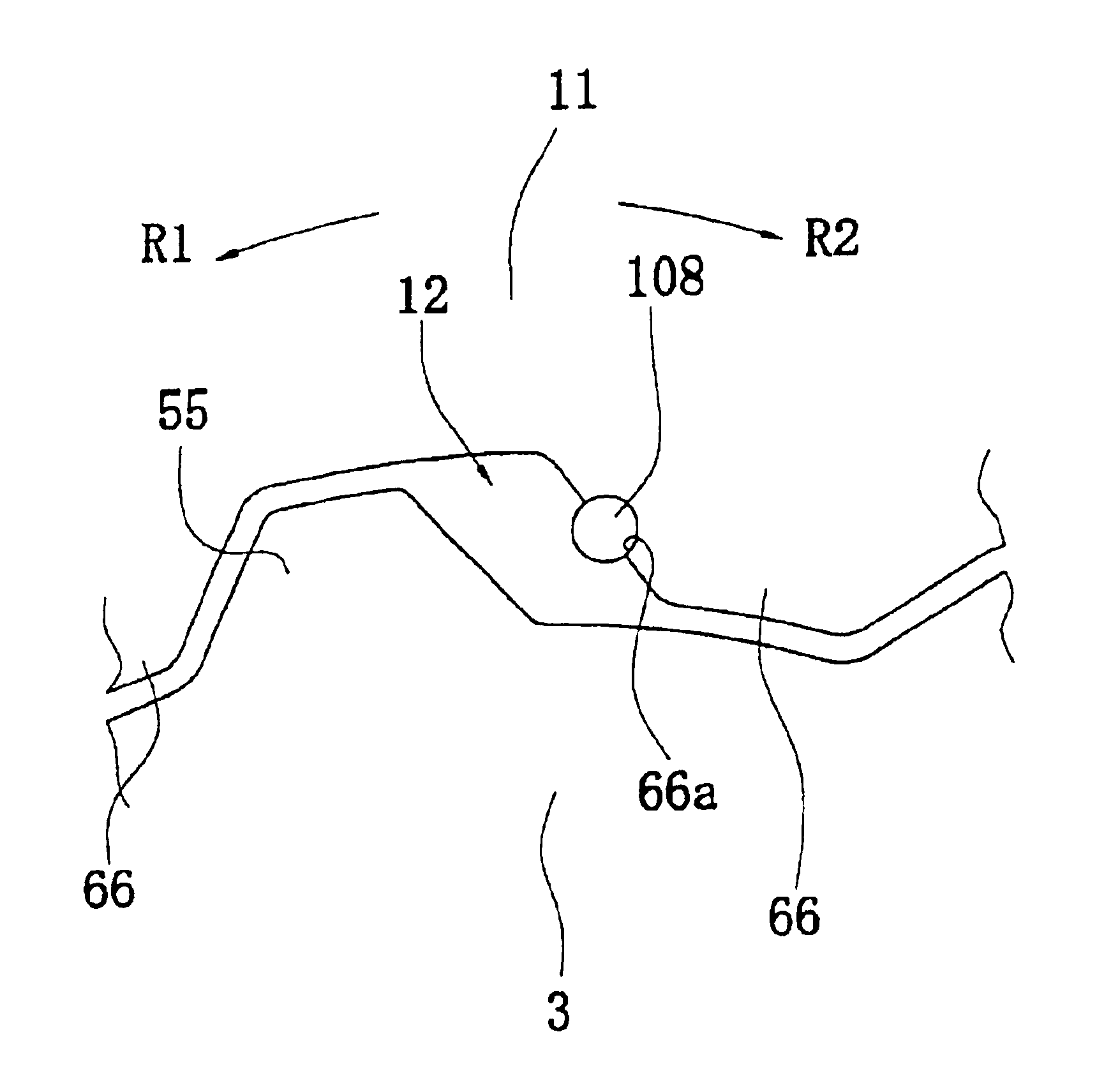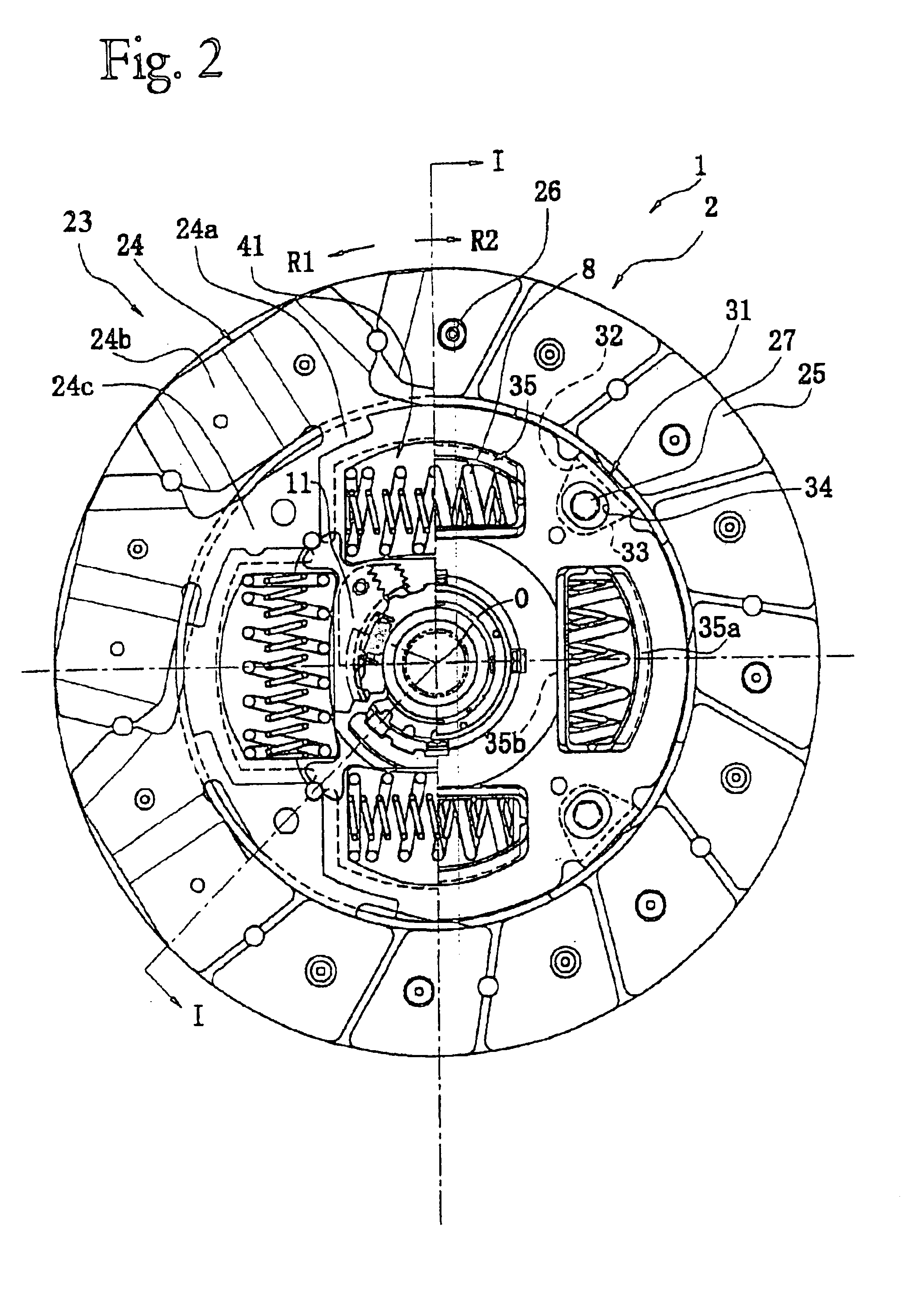Damper mechanism
a technology of adamper and a rotor, which is applied in the direction of mechanical actuated clutches, friction linings, couplings, etc., can solve the problems of excessive torque generated at the tires, excessive shaking of the vehicle, and transmission to rattle, etc., and achieve the effect of suppressing the enlargement of the prescribed angl
- Summary
- Abstract
- Description
- Claims
- Application Information
AI Technical Summary
Benefits of technology
Problems solved by technology
Method used
Image
Examples
Embodiment Construction
FIG. 1 illustrates a cross-sectional view of a clutch disk assembly 1 in accordance with a preferred embodiment of the present invention. FIG. 2 is an elevational view of the same. The clutch disk assembly 1 is a power transmission device used in the clutch device of a vehicle. The clutch disk assembly 1 has a clutch function and a damper function. The clutch function connects and disconnects torque by engaging and disengaging a flywheel (not shown) of an engine (not shown). The damper function absorbs and damps torque fluctuations that are received from the flywheel side using springs and the like.
Line O—O in FIG. 1 represents a rotational axis, i.e., rotational centerline, of the clutch disk assembly 1. The engine and flywheel (not shown) are disposed to the left of FIG. 1 and the transmission (not shown) is disposed to the right of FIG. 1. In FIG. 2, the R1 direction is the rotational drive direction or positive direction of the clutch disk assembly 1, and the R2 direction is the...
PUM
 Login to View More
Login to View More Abstract
Description
Claims
Application Information
 Login to View More
Login to View More - R&D
- Intellectual Property
- Life Sciences
- Materials
- Tech Scout
- Unparalleled Data Quality
- Higher Quality Content
- 60% Fewer Hallucinations
Browse by: Latest US Patents, China's latest patents, Technical Efficacy Thesaurus, Application Domain, Technology Topic, Popular Technical Reports.
© 2025 PatSnap. All rights reserved.Legal|Privacy policy|Modern Slavery Act Transparency Statement|Sitemap|About US| Contact US: help@patsnap.com



